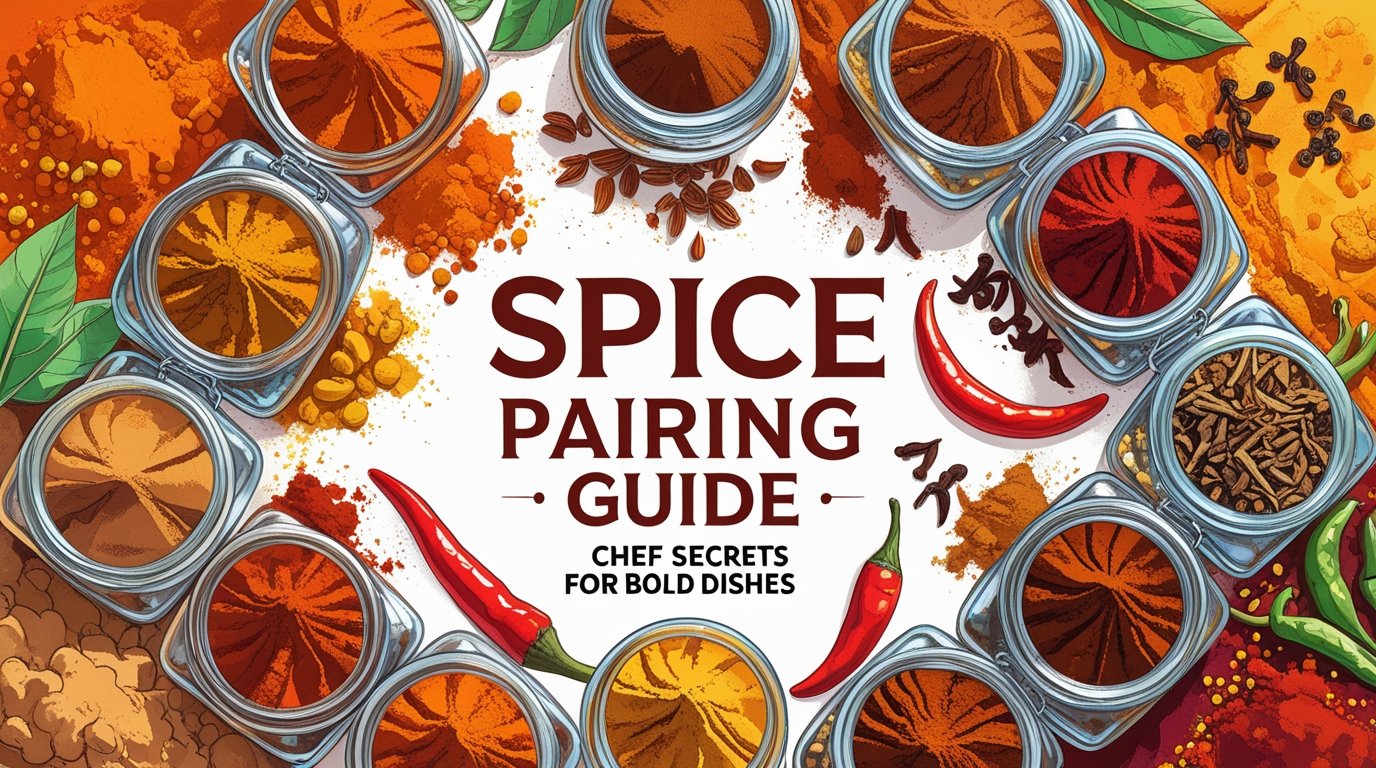You know that feeling when you take a bite of something and it’s just… flat? You’ve added salt, you’ve got good ingredients, but it’s missing that something. I used to think the secret was just adding more of one spice. More cumin! More chili powder! And yeah, that works, sometimes. But then I watched a real chef work, and I realized the magic isn’t in a single ingredient. It’s in the conversation between them. It’s about knowing which spices are best friends, which ones bring out the best in each other. This isn’t about following a recipe. It’s about learning the rules so you can start breaking them like a pro. Let’s talk about how to make your spices sing together.
Forget Recipes, Think Relationships:
Stop thinking of your spice rack as a collection of individual jars. Start thinking of them as members of a band. You wouldn’t have a band where everyone plays the same instrument at the same volume, right? You need a lead guitar, a bass line, and some drums for rhythm. Spices work the same way. You need base notes, middle notes, and top notes. The base notes are the foundation, earthy, deep flavors that linger. The top notes are the bright, sharp hits that you smell first. The magic happens when you build a team, not just pick a star player.
Spices That Were Made for Each Other:
Some pairings are classics for a reason. They’re the foundation of entire cuisines.
- Cumin & Coriander: This is the backbone. I’m talking the solid, reliable foundation of a thousand curries, tagines, and salsas. Cumin is earthy, warm, and almost a little smoky. Coriander is citrusy, light, and floral. Together, they create a complex base that’s so much more than the sum of its parts. Toast them together in a dry pan before grinding, and you’ll unlock a whole new level of flavor.
- Paprika & Garlic: This is the workhorse duo. Whether it’s Hungarian paprika or Spanish smoked paprika, it brings a sweet, earthy depth. Garlic adds its pungent, savory punch. This combination is the soul of chorizo, goulash, and countless rubs for chicken and pork. It’s a reliable, can’t-go-wrong pairing that adds instant warmth and character.
- Cinnamon & Chili: Don’t you dare relegate cinnamon to desserts. In a savory context, its warm sweetness is a perfect counterpoint to the sharp heat of chili. This is the secret behind a great Cincinnati chili, a complex mole sauce, or even a dusting for roasted sweet potatoes. The sweetness tames the fire, and the heat highlights the spice’s complexity.
The Unexpected Friends:
This is where you start to get creative. These are the combinations that make people say, “What is in this?”
- Nutmeg & Greens: This is an old Italian grandmother trick. A tiny, I mean tiny, grating of fresh nutmeg into sautéed spinach, kale, or chard is a game-changer. It cuts the bitterness of the greens and adds a warm, nutty depth that you can’t quite place, but you’ll miss it when it’s gone.
- Cloves & Tomatoes: Sounds wild, right? But think about it. Cloves have an intense, sweet, almost medicinal power. Used with a very light hand, we’re talking one or two cloves stuck into an onion for a simmering sauce, they add an incredible backbone to tomato-based pasta sauces or stews. They complement the acidity of the tomato in a deeply satisfying way. Just remember to fish them out before serving!
- Cardamom & Coffee: Okay, this one isn’t savory, but it’s too good not to mention. Grinding a few pods of green cardamom and adding them to your coffee grounds before brewing is a Middle Eastern tradition that will ruin regular coffee for you. The floral, citrusy notes of the cardamom cut through the bitterness of the coffee and create an incredibly aromatic, complex cup.
The Golden Rule:
I don’t care if your recipe says to or not. If you have a few extra minutes, toast your whole spices in a dry skillet over medium heat before you grind them or add them to a dish. You’ll know they’re ready when they become fragrant and maybe just start to wisp of smoke. This simple step wakes up the essential oils locked inside. It transforms them from dusty and muted to vibrant and powerful. It is, without a doubt, the single biggest upgrade you can make to your spice game.
How to Experiment Without Wasting Food:
The fear of ruining a whole meal is real. So don’t experiment on the whole meal.
- The Spoon Test: When you’re making a soup, stew, or sauce, take a small spoonful out and put it in a little bowl. Add a tiny pinch of the spice combination you’re thinking of trying. Taste it. Does it work? Is it better? Now you know, without risking the entire pot.
- Start with a Theme: Pick a cuisine and explore its classic pairings. Want to experiment with Indian flavors? Start with that cumin-coriander-turmeric-garlic-ginger foundation. Once you’re comfortable, then you can start tweaking.
Conclusion:
Stop being a slave to recipes. Start tasting as you go. Your spice rack is your palette, and your dish is the canvas. Learn the classic combinations like a musician learns scales. Then, once you have that foundation, you can start to improvise. That’s when cooking stops being a chore and starts being an art. Now go on, be bold. You might just create your new signature dish.
FAQs:
1. What’s the best way to store spices?
In a cool, dark place, not right next to the stove. Heat, light, and air are the enemies of flavor. Whole spices last longer than pre-ground.
2. How long do spices really last?
Ground spices lose their potency after about 6 months to a year. Whole spices can last 1-2 years. Your nose is the best test, if it doesn’t smell like much, it won’t taste like much.
3. Is there a substitute for fresh garlic?
Garlic powder has its place in dry rubs, but for the best flavor, fresh minced or crushed garlic is almost always superior.
4. What’s one spice I should definitely have?
Besides salt and pepper? Smoked paprika. It adds an instant, complex smokiness that can elevate everything from eggs to roasted vegetables.
5. How do I fix a dish if I’ve added too much of one spice?
Balance it out. Too much heat? Add something creamy (like coconut milk or yogurt) or sweet (a pinch of sugar). Too bitter? A little acidity, like lemon juice or vinegar, can help.
6. What’s the difference between “hot” paprika and “smoked” paprika?
Hot paprika brings the heat. Smoked paprika (pimentón) brings a deep, woodsy, smoky flavor with varying levels of heat. They are not interchangeable!

